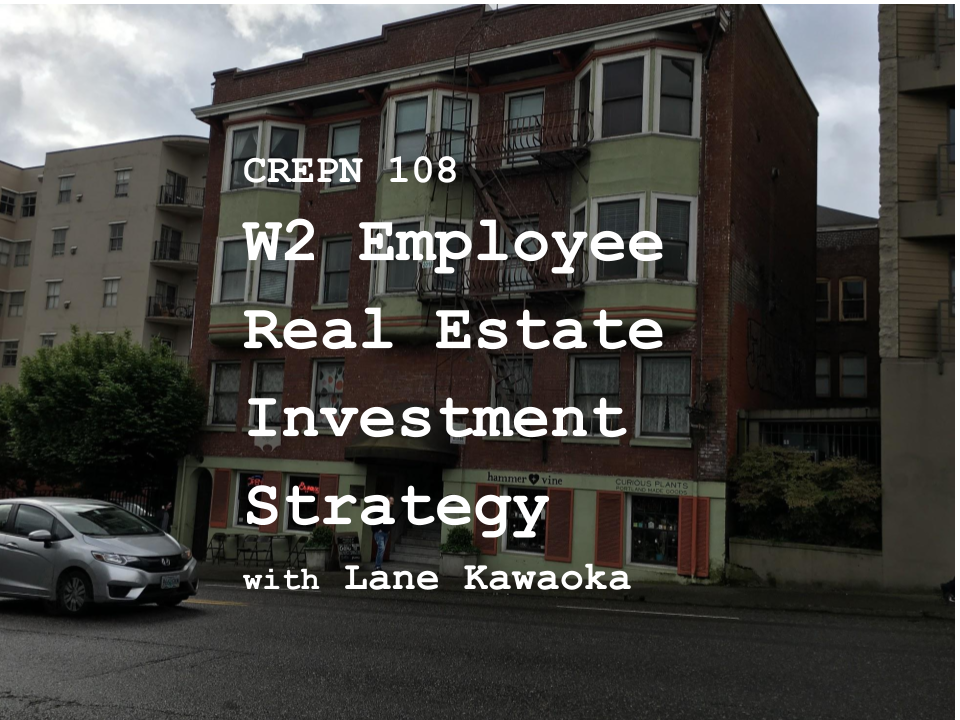
07 Sep CREPN 108 – W2 Employee Real Estate Investment Strategy with Lane Kawaoka
Posted at 07:00h
in Podcast
Learn how a W2 employee’s real estate investment strategy has grown from an accidental landlord to a multifamily syndicator. [x_audio_embed][/x_audio_embed] Lane Kawaoka is an engineer from Hawawii who followed the normal path. He got a good education, a good job and saved to buy his first house. Shortly after buying his home, he realized that he was so busy working that he was never there.
Checkout Lane’s website and podcast: Simple Passive Cashflow
Lane realized he was paying a lot for a home he was never in. That’s when he made the decision to make his home a rental. The result was a lot of extra beer money. Lane continued to work hard as an engineer, and aggressively saving for another down payment. He was on his way. As time went on, he was no longer able to find properties that could cashflow. As his real estate holdings continued to grow, so did his knowledge and experience. He realized that appreciation was out of his control in single family rentals. He needed to find cash flow and appreciation he could control.A new real estate investment strategy
Recognizing the lack of control in single family is what Lane and most investors realize when they compare single family to mulitfamily real estate. Multifamily provides multiple benefits when compared to single family real estate. You must get educated In order to recognize the difference. This requires many hours spent analyzing deals to determine when a deal is a real opportunity. is Benefits include:- Cost sharing; The ability to spread your cost across multiple units.
- Record keeping: The numbers for multifamiy are presented with complete financials to do a complete financial analysis.
- Financing: Lenders look at the property’s ability to produce income and cover the expense load of a mortgage. In single family, it is solely about you and your income to debt ratio.
- Professional management: Management is a built in operating expense.

